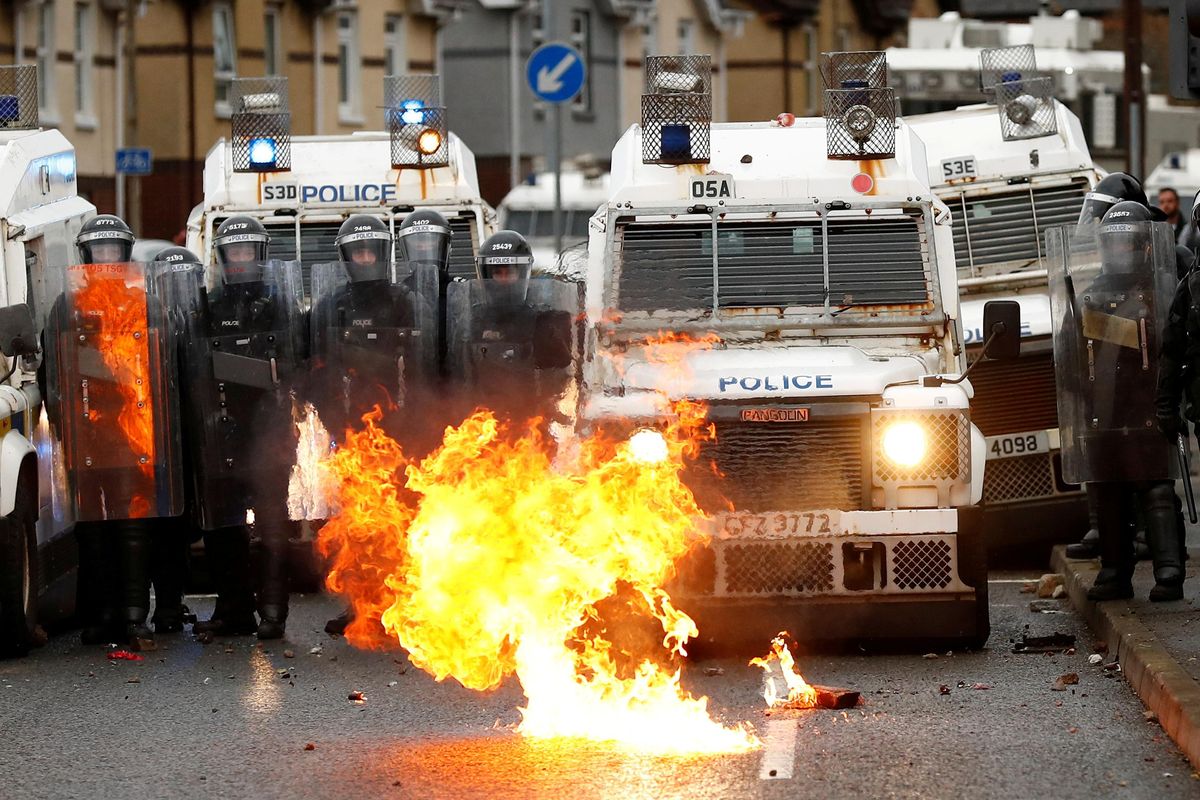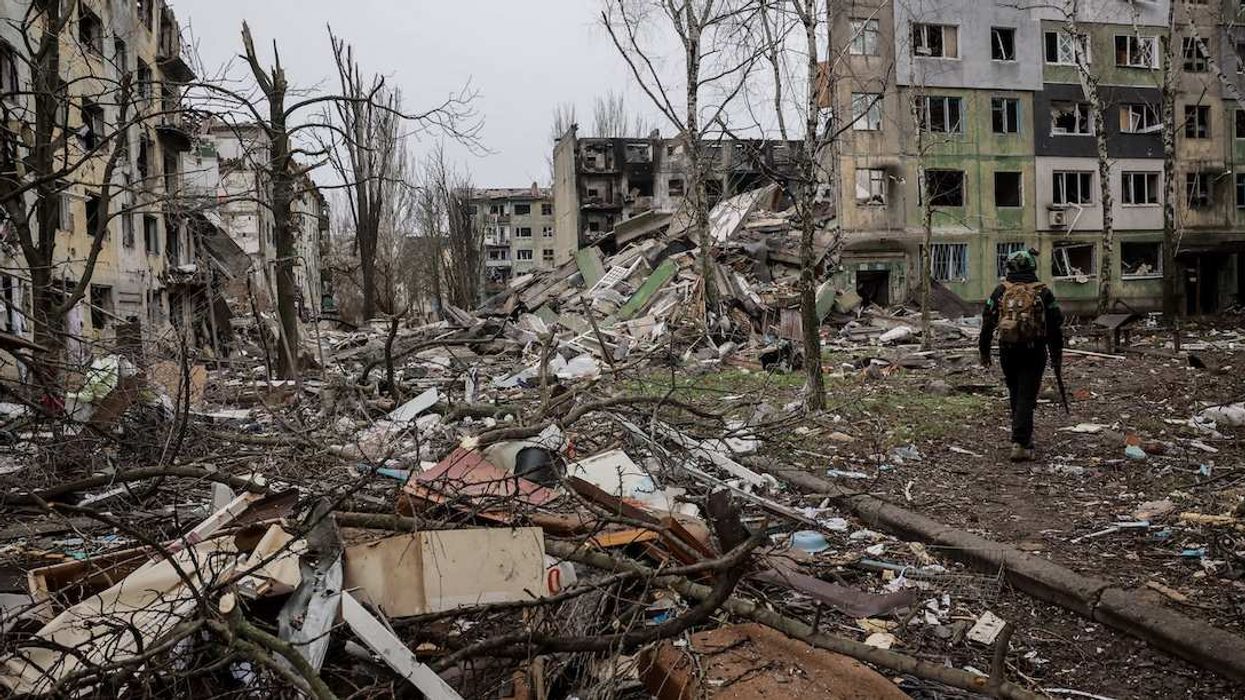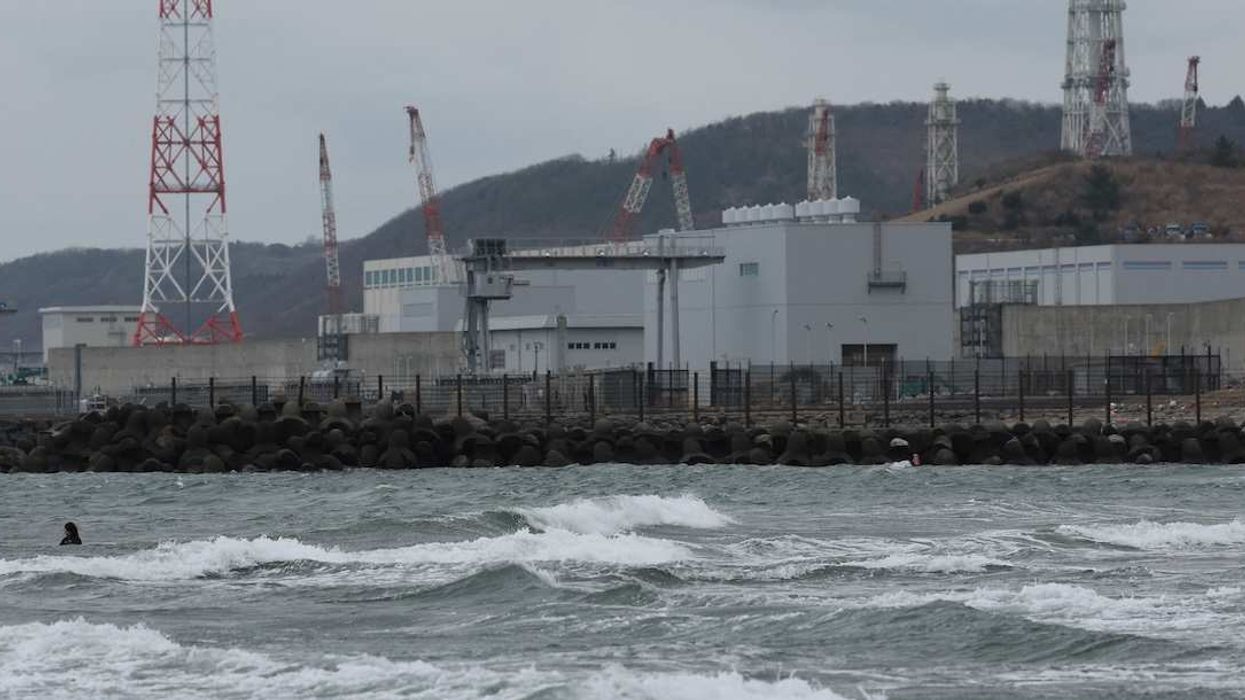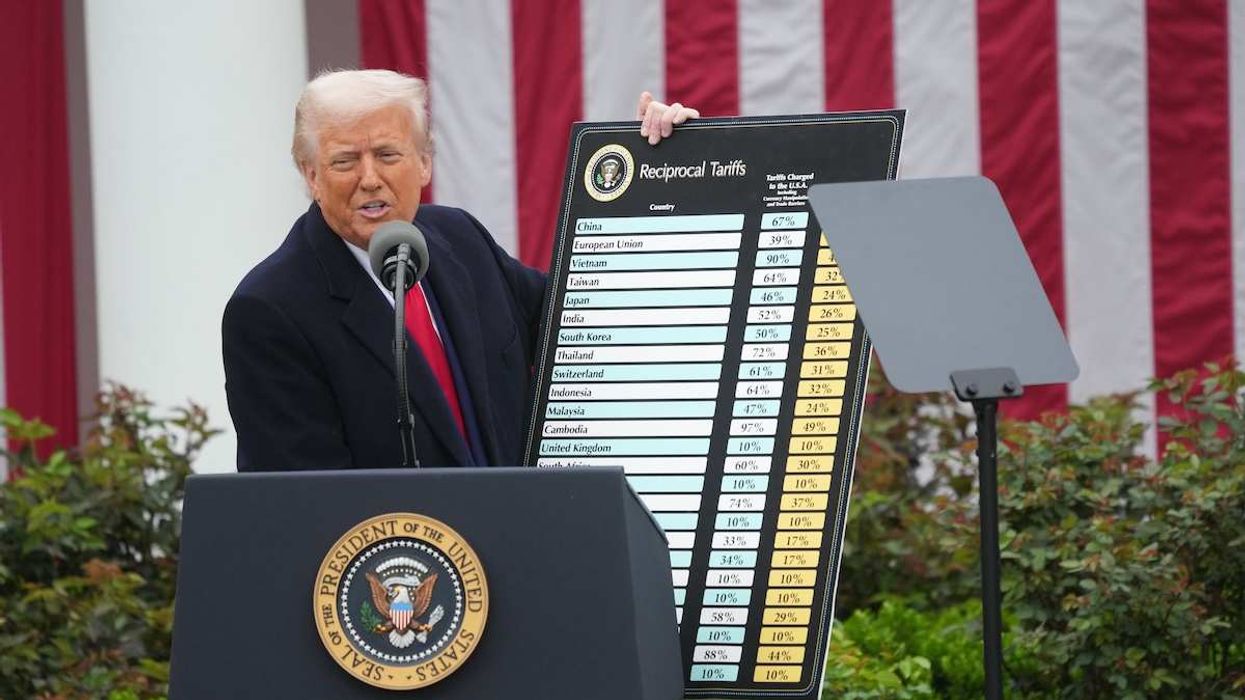In recent days, Northern Ireland has seen some of its worst street violence in over a decade. The anger has subsided a bit this week, but post-Brexit fears leave many uncertain about their future in a deeply divided land with a long history of political violence between Irish republicans and UK unionists.
Much ado about Brexit. As in Scotland, a majority of people in Northern Ireland (56 percent) voted for the UK to remain in the European Union in the 2016 referendum. Those who did not were mostly unionists closely aligned with the UK government.
The problem is that the 1998 Good Friday Agreement — which ended large-scale sectarian violence — prohibits reinstalling a physical border between Northern Ireland, which remains part of the UK, and the Republic of Ireland, an independent country and EU member state. For UK-EU trade, the de-facto border is now in the Irish Sea between Northern Ireland and the rest of the UK. As a result, unionists feel trade restrictions have isolated them from the rest of the United Kingdom.
While London and Brussels haggle over cross-border checks and trade quotas, early glitches, exacerbated by COVID disruptions, have left some Belfast supermarket shelves empty. Customs officials, facing intimidation from angry citizens, are scared to show up to work. Many loyalists now believe the Brexit agreement that UK Prime Minister Boris Johnson signed up for has given them the short end of the stick.
But it's not all about Brexit. One of the triggers for last week's riots was unionist outrage at the non-prosecution of Sinn Féin officials who ignored COVID rules to attend the funeral of a former commander of the Irish Republican Army, responsible for most unionist deaths during The Troubles, a period of heightened sectarian violence in the early 1970s. (Sinn Féin used to be the IRA's political arm, and governed Northern Ireland in partnership with the unionist DUP until their power-sharing agreement collapsed in 2017.)
Another was a recent police crackdown on gangs led by ex-paramilitaries who have struggled to find decent jobs. Indeed, many of the rioters are youngsters with no memory of The Troubles but who live in poverty in the urban ghettos that still separate working-class Catholics and Protestants in Belfast. Pandemic-related lockdowns, job losses and education disruptions have made everything worse.
For unionists, the bigger issue is how Brexit will change Northern Ireland's future. In short, unionists fear the UK-EU split will create irresistible momentum toward Irish reunification, leaving Protestant unionists outside the UK, inside the EU, and a small and resented minority in a majority Catholic country.
A recent poll showed that 47 percent of voters prefer to remain part of the UK, compared to 42 percent in favor of joining the Irish republic. However, most Northern Irish under 45 supported leaving the UK, and if current demographic trends — Catholics have a higher fertility rate than Protestants — hold, it may be only a matter of time for Irish unity to be the majority choice.
That Brexit may end up breaking up the UK is no longer a doomsday prediction. Scotland's first minister is likely to demand a fresh referendum if pro-independence parties perform well in Scottish parliamentary elections on May 6. Republicans in Ireland will argue they have the same right. Perhaps Brexit will deliver the Irish unity that decades of violence failed to accomplish.



















